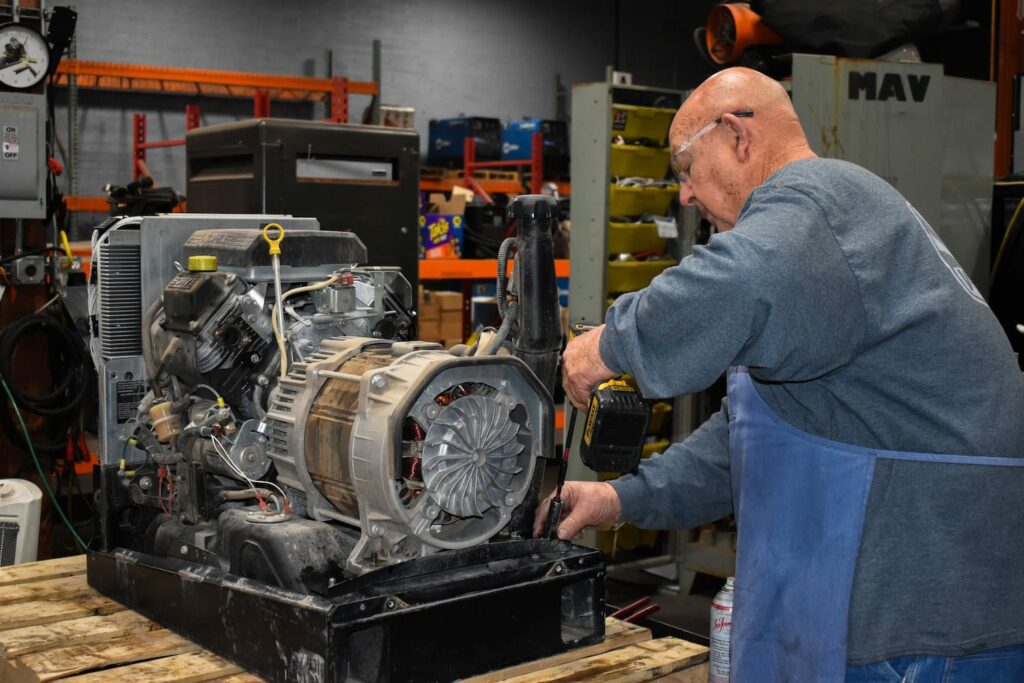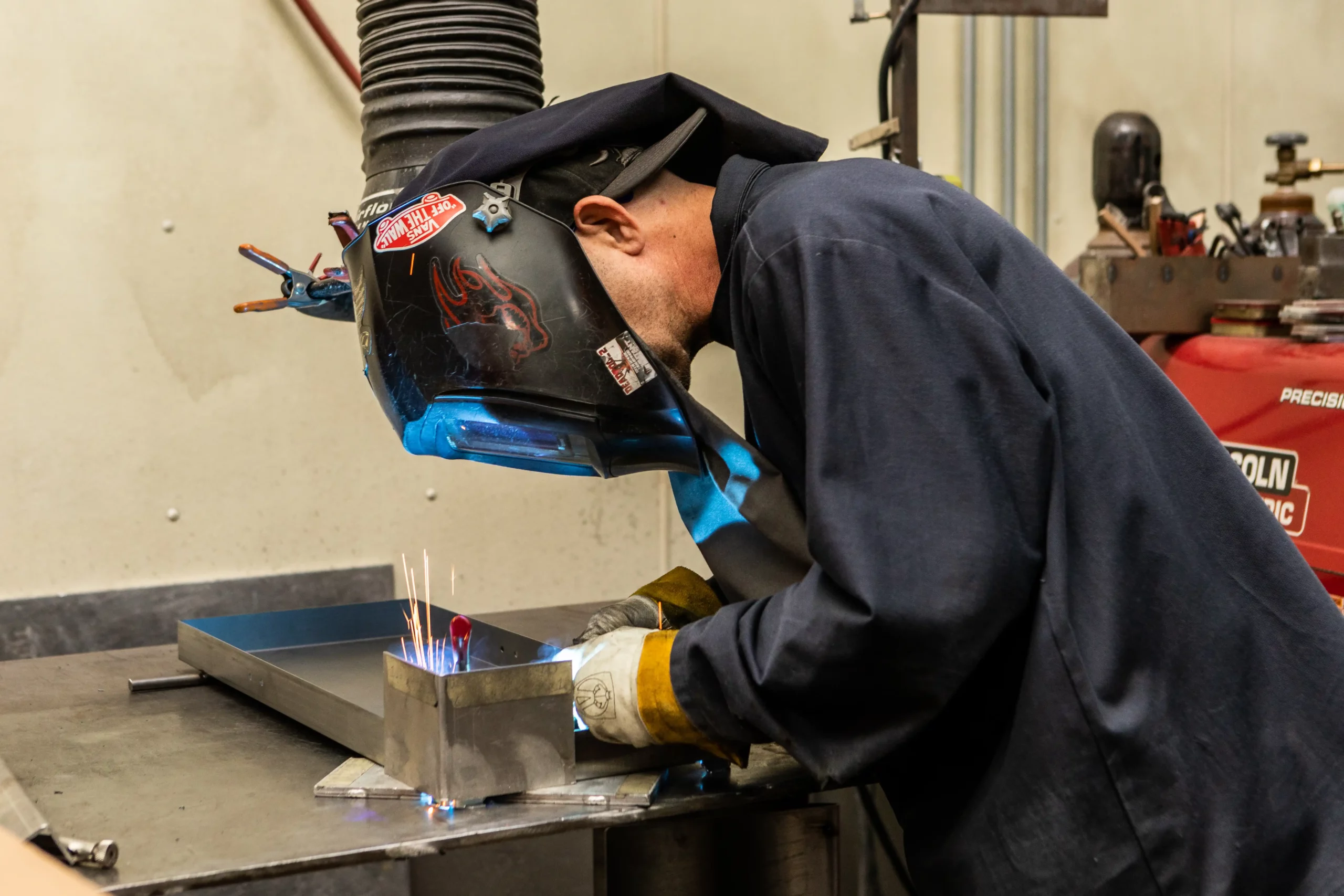Welding issues explained and solved by Montana Mobile Welding and Repair Belgrade Fabrication
Wiki Article
Typical Welding Repair Service Issues and How to Address Them Efficiently
Welding repairs frequently come across a series of problems that can threaten the honesty of the end product. Typical troubles include insufficient penetration, porosity, and misalignment, amongst others. Each flaw offers special obstacles that call for certain techniques for resolution. Understanding these problems is essential for welders intending to boost their outcomes and skills. This conversation will explore these usual welding fixing issues and effective methods to address them.Inadequate Penetration
Insufficient infiltration happens when the weld steel falls short to totally fuse with the base product, leading to weak joints and possible structural failings. This concern frequently originates from not enough warm input, incorrect electrode angle, or improper welding rate. Welders may experience poor infiltration as a result of a miscalculation of the needed specifications for a specific material thickness or type. Furthermore, contamination on the base product's surface area can impede efficient bonding, exacerbating the problem. To resolve inadequate penetration, welders should guarantee suitable settings on their tools and maintain a clean job surface area. Regular evaluation of welds is advised to identify any type of shortages early, enabling prompt corrections and the prevention of endangered structural honesty in bonded settings up.Porosity
Porosity is a common defect in bonded joints that materializes as small gas bubbles entraped within the weld metal. This flaw can endanger the honesty of the weld, bring about lowered stamina and potential failure under stress. Montana Mobile Welding and Repair Fabrication. Porosity usually emerges from contamination, moisture, or inappropriate welding methods, which enable gases to run away into the liquified weld pool. To deal with porosity, welders need to assure appropriate surface area prep work, preserve a tidy workplace, and utilize appropriate welding criteria. In addition, selecting the best filler material and securing gas can alleviate gas entrapment. Regular evaluation and testing of welds can help identify porosity early, assuring timely restorative actions are taken, therefore maintaining the high quality and reliability of the bonded structureMisalignment
Misalignment in welding can arise from different aspects, including inappropriate setup and thermal expansion. Understanding the root triggers is crucial for efficient resolution. Numerous correction methods are offered to realign parts and guarantee architectural integrity.Root causes of Imbalance
Welding misalignment usually stems from a variety of underlying issues that can endanger architectural integrity. One primary reason is inappropriate fit-up of parts before welding, which can cause voids and unequal surfaces. Variations in thermal growth during the welding process can likewise lead to distortion, specifically if the materials being joined have various coefficients of expansion. Furthermore, insufficient securing and fixturing might stop working to hold parts safely in position, causing movement throughout welding. Inadequately kept tools, including welding machines and devices, might present inconsistencies in the weld grain, further contributing to misalignment. Driver mistake, stemming from insufficient training or experience, can likewise play a considerable role in creating misaligned welds.
Correction Methods Offered
Attending to imbalance properly requires a mix of corrective techniques tailored to the certain concerns available. One usual technique is making use of jigs or components to hold components in the appropriate position during welding, ensuring regular alignment. Additionally, pre-heating the materials can help in reducing distortion and boost fit-up. For significant imbalance, mechanical adjustment strategies, such as making use of hydraulic jacks or clamps, can be employed to correct the placement before welding. Post-weld warm therapy might likewise be necessary to relieve tensions created by imbalance. Lastly, careful inspection and modification throughout the arrangement stage can stop misalignment issues from ending up being substantial issues, promoting a smoother welding process and boosting overall structural honesty.Distortion
Distortion is a typical challenge in welding that can occur from numerous aspects, consisting of unequal home heating and cooling. Recognizing the reasons for distortion is crucial for applying reliable avoidance strategies. Resolving this problem not just boosts architectural integrity yet also improves the total high quality of the weld.Sources of Distortion
When based on the extreme heat of welding, materials usually undertake adjustments that can result in distortion. This sensation mainly emerges from thermal expansion and contraction throughout the welding process. As the weld area warms up, the product expands; upon cooling, it acquires, which can create internal stresses. In enhancement, unequal home heating across a work surface can aggravate these anxieties, causing bending or bending. The kind of material additionally plays a significant function; steels with varying thermal conductivity and coefficients of development may react differently, resulting in unpredictable distortions. Bad joint style and poor fixturing can contribute to misalignment throughout welding, increasing the probability of distortion. Comprehending these causes is essential for effective welding repair work and avoidance techniques.Prevention Techniques
Reliable avoidance methods for distortion during welding browse this site emphasis on controlling warmth input and making certain correct joint style. Preserving a regular warmth input assists to reduce thermal development and contraction, which can bring about distortion. Using methods such as pre-heating the workpiece can additionally lower the temperature slope, promoting uniform heating. Additionally, choosing proper joint designs, such as T-joints or lap joints, can enhance security and minimize stress and anxiety focus. Executing correct fixturing to secure the workpieces in location better help in preserving placement during the welding procedure. Finally, staggered welding sequences can distribute heat extra uniformly, protecting against localized distortion. By applying these strategies, welders can significantly reduce the probability of distortion and improve the general top quality of their welds.Breaking
Breaking is a typical issue come across in welding fixings, frequently arising from various aspects such as incorrect cooling rates, product choice, or insufficient joint prep work. The incident of fractures can greatly endanger the honesty of the weld, causing prospective failures during operation. To resolve this issue, welders have to initially assess the origin causes, making sure that materials are compatible and appropriately picked for the certain application. In addition, controlling the cooling price during the welding process is necessary; fast air conditioning can cause tension and cause splitting. Appropriate joint style and preparation also add to lessening the danger. Implementing these techniques can boost weld quality and toughness, inevitably reducing the chance of cracking in ended up weldments.
Incomplete Blend
A substantial problem in welding repair services is incomplete fusion, which happens when the weld steel does not properly bond with the base material or previous weld passes - Montana Mobile Welding and Repair Welding. This issue can bring about weak points in the joint, possibly compromising the honesty of the bonded framework. Variables contributing to insufficient blend include insufficient warm input, incorrect welding technique, and contamination of the surfaces being signed up with. To resolve this concern successfully, welders must guarantee appropriate pre-weld cleaning and surface area preparation, along with readjust their welding parameters to achieve appropriate penetration and blend. Regular evaluation throughout the welding process can additionally assist recognize incomplete blend early, permitting for timely restorative measures to enhance the overall top quality of the weldOverheating
While welding repair work can improve architectural stability, overheating provides a considerable difficulty that can lead to century mig welder product destruction. Excessive warmth throughout welding can change the mechanical homes of steels, leading to lowered toughness, enhanced brittleness, and warping. This phenomenon is specifically important in high-stress applications where architectural dependability is vital. Identifying getting too hot can entail visual examinations for staining or distortion, along with keeping track of temperature level during the welding process. To alleviate the threats connected with overheating, welders must employ appropriate strategies, such as managing warmth input, changing traveling speed, and utilizing ideal filler products. In addition, executing pre- and post-weld heat therapies can help recover product residential properties and improve the general quality of the fixing, making sure long-term efficiency and security.Often Asked Questions
What Are the Typical Indications of a Welding Problem?

Exactly How Can I Test My Welds for High quality?
To check welds for top quality, one can make use of aesthetic examinations, ultrasonic screening, and radiographic approaches. Each method guarantees structural integrity, determines flaws, and validates adherence to specified requirements, eventually improving the integrity of the welded joints.What Safety and security Safety Measures Should I Take While Welding?
When welding, one should focus on safety and security by using suitable personal safety equipment, making sure appropriate ventilation, protecting flammable materials away, preserving a clean workspace, and understanding environments to avoid accidents and injuries.Can I Fix a Weld Without Redoing the Entire Joint?
Repairing a weld without redoing the entire joint is feasible, depending upon the damages (Belgrade Welding). Methods such as grinding, adding filler product, or utilizing a welding process can efficiently deal with specific problems while preserving the surrounding structureWhat Devices Are Essential for Efficient Welding Services?
Necessary devices for effective welding repair services include a welding equipment, wire brush, grinder, protective gear, clamps, and filler materials. Each tool plays a vital function in guaranteeing quality and security during the repair service procedure. Porosity usually occurs from contamination, wetness, or improper welding techniques, which enable gases to leave into the liquified weld pool. Inadequately kept tools, consisting of welding machines and tools, might introduce disparities in the weld bead, further adding to misalignment. When subjected to the extreme heat of welding, products commonly undergo changes that can lead to distortion. Splitting is a common concern encountered in welding repair services, typically resulting from numerous elements such check this as improper cooling prices, product option, or insufficient joint prep work. A considerable problem in welding fixings is incomplete blend, which takes place when the weld metal does not appropriately bond with the base material or previous weld passes.Report this wiki page